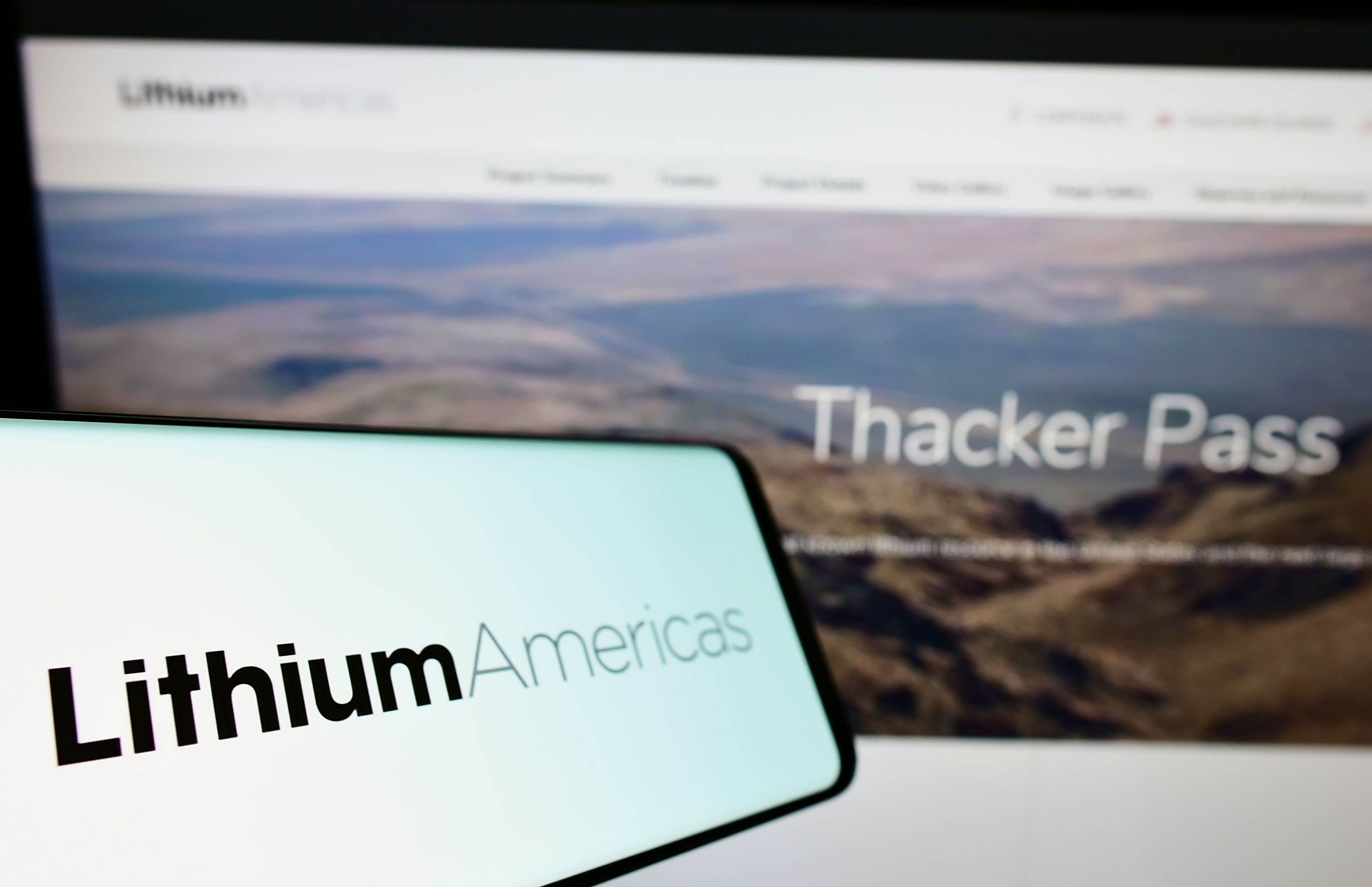Agreement reached between US Department of Energy and Lithium Americas regarding loan
Opinion Pieces

6
Oct
2025
Agreement reached between US Department of Energy and Lithium Americas regarding loan
The agreement to advance the first draw of US$435M de-risks the Thacker Pass development but introduces potential dilution and new cash commitments.
Lithium Americas (LAC), together with joint venture (JV) partner General Motors (GM), has reached a non-binding agreement in principle with the US Department of Energy (DoE), which provides provisions to advance the first draw of US$435M on the US$2.26Bn DoE loan.
The drawdown will enable significant progression through construction and toward commercial production. Once in production, the project will reduce GM’s dependence on imported lithium. The first phase of 40ktpy of lithium carbonate is enough to support approximately 800,000 EVs and meet 7% of projected US demand related to Li-ion batteries in 2030.
The amount available from volumes not expected to be purchased from GM remains to be seen, as it is unclear whether GM will scale back any of its EV plans due to the elimination of EV tax credits on 30 September. The company sold a record 21,000 EVs in August and reported triple-digit growth in US sales in 2025, reaching an estimated US market share of 13%. The surge in sales is likely attributable to customers bringing purchases forward to qualify for the tax credits ahead of the deadline, and the expectation is that US EV sales will decline considerably in the short term.
The YTD sales of 118,000 would require roughly 5.9kt LCE, ~15% of LAC’s first phase production and ~110% of current US production. This shortfall in domestic production is one driver that has led OEMs such as GM to take equity stakes in domestic battery raw material projects to secure long-term supply and reduce exposure to volatile global markets. Meanwhile, the US government seeks to expand domestic production to strengthen supply chain resilience, reduce import reliance, and ensure that the US automotive sector can meet its current and future demand for critical raw materials, such as lithium.
For LAC, the ability to draw down on the loan injects a material amount of capital, enabling project development to continue and increasing the likelihood that the project will reach completion as planned. However, the extra US$120M that must be posted to reserve accounts could affect the company’s liquidity. The ability to secure additional offtake agreements could provide associated pre-payments that could assist with covering this.
For the DoE, the arrangement furthers the administration’s industrial policy goals whilst also meeting the agenda to better steward taxpayer dollars by providing some structured risk management and protecting taxpayer exposure.
The news has been met with a positive reaction from the equity market, with investors potentially viewing the reduced execution risk as outweighing the dilution and cash reserve requirement. However, the portion of the market hoping for a price floor or real partnership story will likely view this deal as underwhelming.
A summary of the deal is as follows:
First Draw: US$435M expected in Q4 2025 to be drawn from the previously announced DoE loan.
Deferred debt service: DoE agreed to defer US$182M of debt service over the first five years.
Equity/warrants to DoE: DoE will receive (A) a 5% equity stake in LAC warrants exercisable at US$0.01 per share and (B) a 5% economic stake in the JV via warrants exercisable at US$0.01 per JV unit.
Additional reserve cash: LAC must post US$120M to DoE loan reserve accounts within 12 months after the First Draw.